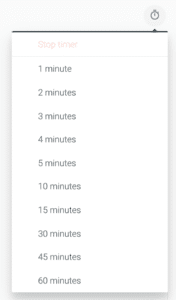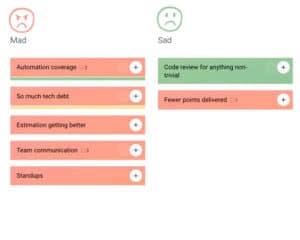Manage BMW in retrospectives with these 7 tips!
There’s an acronym used in Agile – BWM – and we don’t mean Bayerische Motoren Werke, the German brand of luxury cars well known around the world.
We’re talking about the “Bitching, Moaning, Whinging” session that can sometimes happen during retrospectives. As much as we would love to believe that retrospectives are always rainbows and sunshines with a focus on the agile manifesto and prime directive, not all teams and meetings will fall neatly into this paradigm.
And look, we get why BMWs can happen during a retrospective – a time when a team reflects on what happened in the iteration and identifies actions for improvement going forward.
Whilst BMWs will exist, to varying degrees within retrospectives, the last thing you want is for it to hijack your retro and everyone leaving your meeting with the wrong focus.
So how might we balance out giving the people the opportunity to share what the problems are without it turning into the next soap drama?
Here at TeamRetro, we’re sharing some ways to manage BMW in retrospectives.
Activate the “spidey sense”
They say prevention is better than the cure and we totally agree with this saying! We advise scrum masters to turn on their “spidey senses” and sense from the stand ups and one-on-ones if something is brewing. If it is, address those them before so you manage BMW in retrospectives by keeping them out and the constructive feedback in.
Manage BMW in retrospectives with a timebox for a soapbox
BMWs are pretty inevitable and instead of letting it all stewed in, we suggest there is a way to let it stew out strategically. Here’s how:
- Schedule one minute in your realtor to “let go” – let your team air out something that’s made them mad, lose focus or just need to get off their chest.
- You can use the timebox feature in TeamRetro to “fix” the amount of time.
- And use the information as a way to focus actions / solutions or park it if it needs to be solved after the retro.



Call an elephant an elephant
The saying “there’s an elephant in the room” typically means that there is an obvious problem or difficult situation that people do not want to talk about. Giving this “elephant” space to be listed on the retro topics for discussion means there will be less hidden issues and agendas, giving your team confidence to say what they need to.
Change the focus
A typical Agile Retrospective asks 4 basic questions – what went well, what went less well, what do we want to try next and what puzzles us – that gets teams thinking about the outcomes of the last sprint, and what actions they should focus on next.

If you are finding this style of retro is opening the BMW can, then why not look at putting on a different hat with your retros?
There’s the Starfish Retrospective, which is a data gathering activity to foster the thinking around practices and the value the team getx from it. It helps team members to understand each other’s perceived value on such practices.

Or try the mad sad glad retrospective which frames discussion around the emotional journey of your team during the previous sprint, and is a great way to identify opportunities to improve team morale and job satisfaction.

There are many more retro hats to put on and try with TeamRetro – WRAP, FLAP and the Four Ls – give them a go for something innovative and creative that will engage your team best!
Another model to try out too is the Circle and Soups model by Diana Larsen to help people reconcile what they can and can’t influence.
Why not try some of these styles to not only manage BMW in retrospectives but also to have fun!
Switch Scrum Master Roles
While a scrum master typically runs the retrospectives, it doesn’t mean they should be the only doing this.
Changing up the facilitators for retrospectives can have many advantages, including:
- Different styles which might make retros more exciting as it changes with each facilitator;
- Provides an opportunity for all team members to have responsibility to run a successful retro for their team members;
- Professional development for all team members;
- Less BMW because team members who you work and collaborate with are running the retros.
Data don’t lie
If you find your retrospectives become unfocused with too much BMW’s one thing we can suggest and have seen worked well, is to allow for voting for items or learnings to focus on independently.
Independent voting keeps things real allowing the team to decide on where the focus should be.

Voting can be done by using the sticky dot methods if you’re running retros physically with the good old post-it notes. Or, if you’re doing your retros online, we at TeamRetro have created a + vote system, accessible by a click of a button.
Once you have collected the data, talk to it. Use it as evidence to back up your retros or focus on improving data outcomes rather than people.
With this data in hand you now know where to direct the conversation and move the thinking into problem solving and action planning.
Follow up
Following up on the retrospective action items involves delegating tasks to each team member.
By agreeing to follow up either as a separate team meeting, with one to ones or with the other stakeholder, as the Scrum Master, can assist teams to own their retro items.
Manage BMW in retrospectives with TeamRetro
TeamRetro is an enterprise-ready online retrospective tool for remote teams. Our guided and creative retrospective techniques ensure your retros are worthwhile – each and every time!
Try it FREE for 30 days today and see if it can help you to manage BWM in retrospectives.

